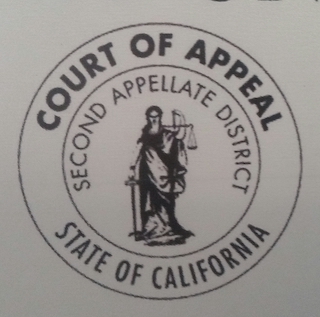In terms of establishing credibility with the court, and thus having one’s appeal taken seriously, one should give quite a bit of attention to the format of the opening brief.
A brief in an appellate court must follow strict format requirements, unlike motions in the trial court (at least with most judges). The first required document is the cover page, which must follow the local rules as to what is stated, the font, the font size and where on the page this information is provided. The local rules vary by appellate district, so it is wise to check the appellate court website.
Brief Synopsis: Great care must be used in writing an opening brief, not only in using proper format, spelling, punctuation and grammar, but the content as well. The following article briefly discusses the required format and the required content according to the California Rules of Court.
The opening brief must be followed by a table of contents and table of authorities, something that many attorneys do not include in briefs at the trial court level, usually because their motions are short.
Next, the opening brief must contain a brief statement of the case, including a concise statement of the matter’s procedural history, the statement of appealability and a statement of the relevant facts. See California Rules of Court 8.204(a). Any reference to the record contained in the brief should have citations to the clerk’s transcript or reporter’s transcript.
The brief is limited to 25,500 words for felonies (Cal. Rules of Court 8.360(h)) and 6,800 words for a misdemeanor (Cal. Rules of Court 8.883(b)). If one needs to exceed this word limit, an application to exceed this can be filed, and in most courts, can be filed alongside the proposed brief. Such an application must establish the unique need for the excess words and, if granted, often the court will allow a compromise length somewhat shorter than what was sought.
The organization of the brief must be given careful attention. Separate arguments must appear under separate headings (Cal. Rules of Court 8.204(a)) and the headings should clearly and concisely state the argument, followed by the law and facts in support thereof.
There is no faster way to lose credibility with the appellate court than to misunderstand the applicable standard of review. The applicable standard and prejudice standard should be clearly stated.
The standard of review is used to determine if a judicial error was committed and is “de novo,” “abuse of discretion” or “substantial evidence,” or for an issue involving both a question of law and fact, a mixture of more than one standard.
 Court of Appeal Second Appellate District Los Angeles
Court of Appeal Second Appellate District Los Angeles
The applicable prejudice inquiry decides whether reversal is proper. Some constitutional errors are considered structural and thus prejudicial per se, but most are subject to the “reasonable probability” standard set forth in Chapman v. California (1967) 386 U.S. 18.
In Chapman, the prosecution made numerous comments about defendants’ decision not to testify, suggesting that this was an admission of guilt. Defendants were then sentenced to death. On appeal, defendants argued that such a violation of their Fifth and Fourteenth Amendment rights to remain silent could not be considered harmless, as the prosecution argued in light of the evidence otherwise available for the jury to consider. On appeal, the Supreme Court held that “The adoption of any harmless error rule, whether the one proposed by the Court, or by the dissent, or some other rule, commits this Court to a case-by-case examination to determine the extent to which we think unconstitutional comment on a defendant's failure to testify influenced the outcome of a particular trial. This burdensome obligation is one that we here are hardly qualified to discharge. . . . Reversal is required when a conviction may have been rested on a constitutionally impermissible ground despite the fact that there was a valid alternative ground on which the conviction could have been sustained. Stromberg v. California (1931) 283 U. S. 359, 283 U. S. 367-368;Williams v. North Carolina (1942) 317 U. S. 287, 317 U. S. 292.
Some other errors are subject to the tougher “reasonable probability” (not possibility) standard set forth in People v. Watson (1956) 46 Cal. 2d 818, 836.
When there are multiple errors, it is wise to consider the “cumulative error” standard may apply. People v. Hill (1998) 17 Cal. 4th 800, 844.
Once the opening brief is filed, the State of California will have 30 days to file the respondent’s brief. Cal. Rules of Court 8.360(c), 8.882(a), 8.927.
Defendant will then have 20 days to file a reply brief. Id. Although considered optional, we think a reply brief should always be filed. Not only does it provide defendant an opportunity to distinguish or respond to the opposition, but it can allow defendant an opportunity to cite to additional authorities relevant to the issues. It is important to remind one here that a reply brief generally cannot raise new arguments in a reply brief. People v. Zamudio (2008) 43 Cal. 4th 327, 353.
For more information about appellate issues in general, please click on the following articles:
 Court of Appeal Second Appellate District Los Angeles
Court of Appeal Second Appellate District Los Angeles